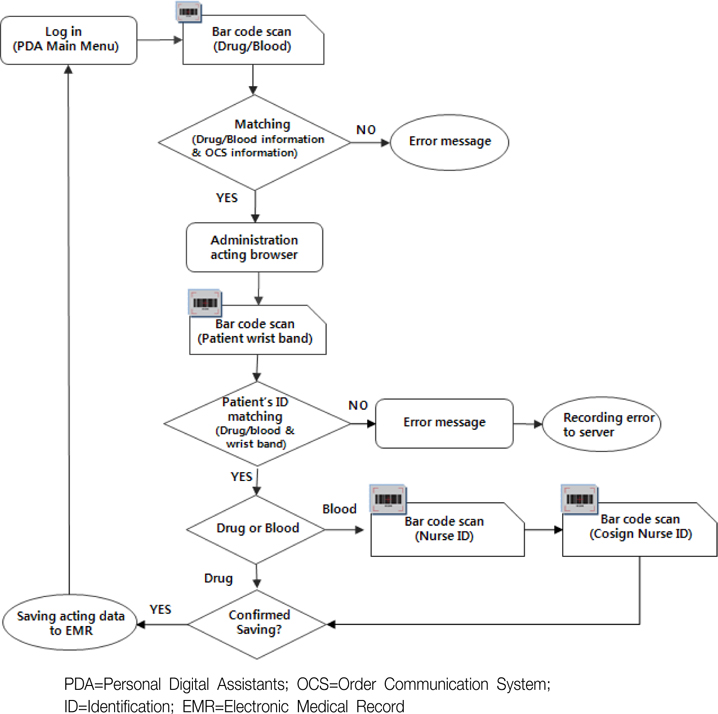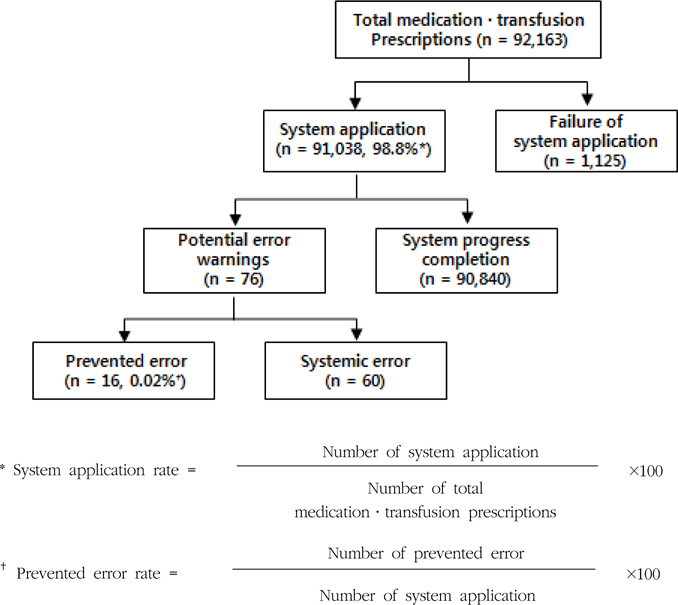1Chief Nursing Officer, Nursing Department, Samsung Medical Center; Associate Professor, Department of Clinical Nursing Science, Samsung Medical Center Sungkyunkwan University School of Medicine, Korea.
2Nurse Manager, Nursing Professional Development, Nursing Department, Samsung Medical Center, Korea.
3RN, Nursing Professional Development, Nursing Department, Samsung Medical Center, Korea.
Copyright © 2012 Korean Academy of Nursing Administration


Cases of Failure of the Bar Code Medication Administration and Blood Transfusion System Application
PDA=Personal Digital Assistants; EMR=Electronic Medical Record
Nurses' Satisfaction with the Bar Code Medication Administration and Blood Transfusion System (n=337)
Nurses' Satisfaction with the System according to General Characteristics (n=337*)
*except for no response
PDA=Personal Digital Assistants; EMR=Electronic Medical Record
*except for no response